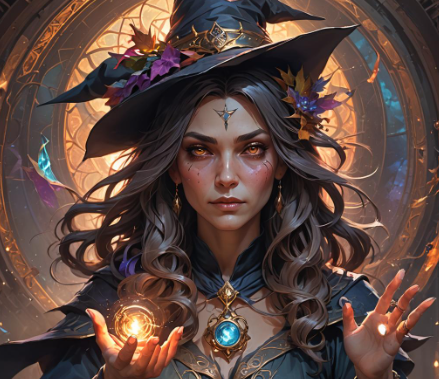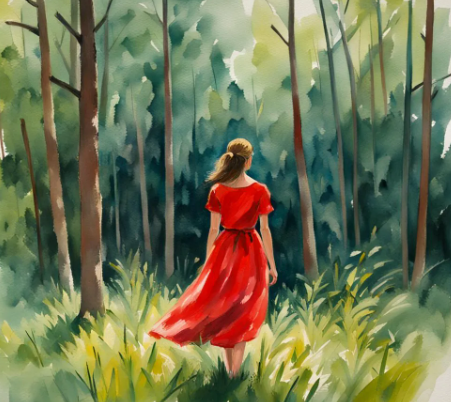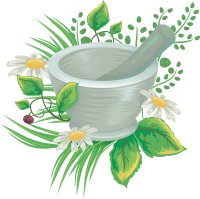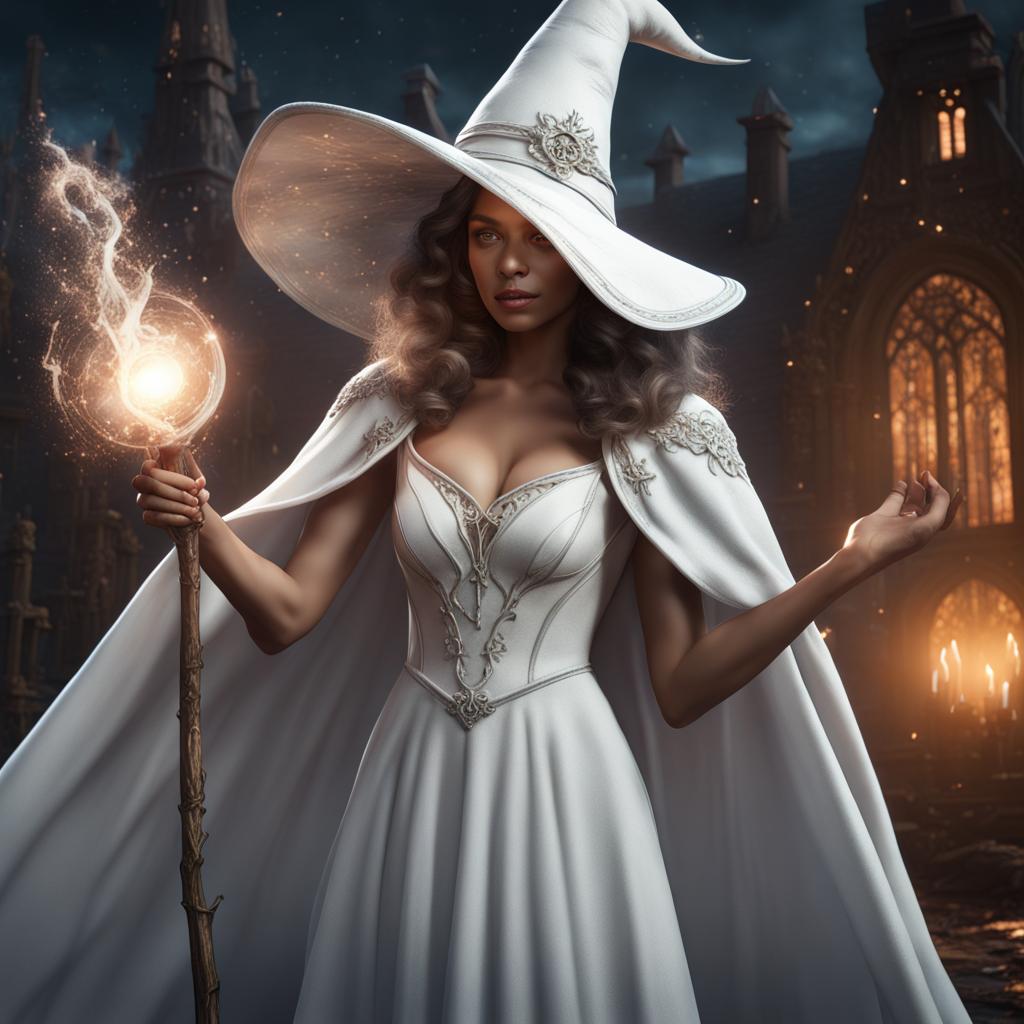Witchcraft, a subject often shrouded in mystery and misconceptions, has captivated human imagination for centuries. From ancient folklore to modern pop culture, witches have been a source of fascination, fear, and intrigue.
Origins
Witchcraft can be traced back to ancient times, where it was often associated with pagan religions and nature-based spiritual practices. The term “witch” itself has its roots in Old English and Old Norse languages, referring to individuals who possessed magical abilities and practiced sorcery. In many cultures, witches were revered as healers, wise women, and spiritual guides. However, as time progressed, perceptions shifted.
Since history began, witchcraft beliefs have typically only existed within small-scale agricultural societies, where social relationships are complex, and little access is given to Western scientific knowledge and technology. Witchcraft beliefs tend to be less frequent in large urban civilizations or countries that have become heavily exposed to Western culture. Its prevalence can often be found among women living close together and connected by multilayered social ties, who claim they possess supernatural powers.
Witchcraft’s origins can be difficult to pinpoint due to evolving definitions. At first, Christian church leaders considered these beliefs heretical. Later in the tenth century however, witches began being depicted as wicked women who possessed people, rode night-flying beasts, and held nightly sabbats with devilish companions.
Unfortunately, witchcraft has also been associated with negative stereotypes and fear-driven beliefs throughout history. In medieval Europe, for example, the rise of Christianity led to the demonization of witches, labeling them as agents of the devil and practitioners of black magic. This led to the infamous witch trials, where countless innocent lives were lost due to baseless accusations and mass hysteria.
In recent years, there has been a resurgence of interest in witchcraft, particularly within the realm of modern spirituality. Many people are drawn to the empowering and inclusive nature of this practice, which encourages self-discovery, personal autonomy, and a reverence for nature. Modern witches often form supportive communities, for sharing knowledge, experiences, and rituals. The accessibility of information through books, online resources, and social media has played a significant role in this revival.

Practices
Witchcraft encompasses a wide range of practices and beliefs, varying across different traditions and cultures. While it is impossible to provide an exhaustive overview, some common elements can be explored. Many witches follow a spiritual path that emphasizes a deep connection with nature and its cycles. They often engage in rituals, spells, and divination to manifest their intentions, seek guidance, and promote personal growth. Some witches also work with herbs, crystals, and other natural elements to harness their energies for healing or spellcasting purposes.
Many practitioners of witchcraft believe in an unseen supernatural realm that is neither good nor evil, yet can provide wisdom, power, and spiritual identity by engaging with it. Additionally, ritual and ceremony practices incorporate invocation chanting into spells to call upon deities or spirits to assist with their goals.
Ritual tools are used in magic, and each witch keeps a collection of these implements on hand for use during spell casting. Many witches also keep an altar at home to serve as their working space. This often features some kind of raised surface where important tools or spell elements are kept close at hand.
Many witches also wear robes during rituals and spellcasting sessions that correspond with their work: green for herbal magic, brown for animal or self magic, and blue for healing and protection. Furthermore, witches often carry around a grimoire containing spells or other magical texts.

Accusations
Many individuals have been accused of witchcraft and have faced persecution as a result. Some were burned alive, poisoned or even beaten to death, while in other instances were accused for both good luck (crops or wealth) as well as bad (deaths, fires or floods). Today the phrase “witch hunt” has come to represent prosecution of people suspected of practicing this dark craft.
Women were often accused of witchcraft if they deviated from social norms in their societies and did not conform with expected behavior. This may have involved challenges to male-dominated cultures through leadership, money or political positions.
In the 17th century, witch trials reached their apex, leading to the execution of thousands of individuals. It was a period marked by panic and fear caused by superstition, xenophobia, competition for Christian consumers, and society’s tendency towards finding scapegoats for complex problems.
The Salem Witch Trials are an iconic example of such events. Historians have advanced various theories as to their cause, including economic hardship, mass hysteria or convulsive ergotism (caused by eating food contaminated by the fungus ergot). Unfortunately, most allegations against individuals involved accusations that they practiced pagan religions or magic practices with Satan’s aid despite no direct proof.

White Witchcraft
White witchcraft, also known as light or benevolent witchcraft, is a spiritual practice that focuses on harnessing positive energies for the greater good. Unlike its counterpart, black witchcraft, which involves manipulating energies for personal gain or harm, white witchcraft emphasizes healing, protection, and the promotion of harmony in the natural and spiritual realms.
White witchcraft operates on a set of guiding principles and ethics, which distinguish it from other magical practices. The practitioners of white witchcraft adhere to the belief that all living beings are interconnected, and they strive to maintain a harmonious relationship with nature and the universe. Their primary goal is to use their magical abilities for healing, love, protection, and spiritual growth.
White witches follow a strict code of ethics, often referred to as the “Threefold Law” or the “Law of Return.” This principle states that any energy or intention sent out into the universe will return to the sender threefold, whether positive or negative. Therefore, white witches are cautious and responsible with their magical practices, ensuring their actions are aligned with their intentions.
One of the core focuses of white witchcraft is healing. White witches use their knowledge of herbs, essential oils, and energy manipulation to promote physical, emotional, and spiritual well-being. They may also perform rituals to cleanse spaces, remove negative energies, and protect themselves and others from harm.
White witches have a deep appreciation for nature and its inherent energies. They often engage in rituals and ceremonies that honor the cycles of the moon and the changing seasons. By aligning themselves with these natural rhythms, white witches believe they can enhance their magical abilities and strengthen their connection with the divine.

Black Witchcraft
Black witchcraft is a term that has been misconstrued and sensationalized over the years. Contrary to popular belief, it does not imply evil or malevolent practices. Instead, it refers to a branch of witchcraft that embraces the exploration of darker aspects of human nature, the shadow self, and the mysteries of the universe.
In black witchcraft, practitioners delve into the shadows, both within themselves and the world around them. This exploration allows for a deeper understanding of the human psyche and the complexities of life. It is an invitation to embrace the entirety of existence, acknowledging that light cannot exist without darkness, and vice versa.
Black witchcraft emphasizes the importance of balance. Just as the moon waxes and wanes, life presents us with a continuous cycle of light and shadow. By acknowledging and working with both aspects, practitioners seek to achieve equilibrium and harmony within themselves and their surroundings.
One of the key aspects of black witchcraft is the exploration of the mysteries that lie beyond the veil of everyday perception. It involves delving into ancient knowledge, esoteric practices, and the occult to gain a deeper understanding of the hidden forces at play in the universe. This pursuit of knowledge aims to empower individuals and expand their consciousness.
Contrary to popular belief, black witchcraft does not condone harmful or malicious actions. Like any other form of witchcraft, it upholds the principles of ethics and responsibility. It is essential to break away from the stereotypes that surround black witchcraft. It is not about casting curses or causing harm, but rather about embracing the shadows, exploring the mysteries, and finding balance. Just as light and darkness coexist in the world, black witchcraft seeks to uncover the hidden truths and foster personal growth and enlightenment.

Green Witchcraft
Green Witchcraft, also known as Earth Witchcraft or Natural Witchcraft, is a spiritual path that revolves around the belief that everything in nature is interconnected and possesses its own unique energy. Practitioners of Green Witchcraft seek to attune themselves with the rhythms of nature, honoring and working with the elements, plants, animals, and the cycles of the Earth.
At the heart of Green Witchcraft lies the desire to live in harmony with the natural world. Green Witches strive to reduce their ecological footprint and adopt sustainable practices in their daily lives. They prioritize eco-friendly alternatives, such as using organic and natural products, embracing plant-based diets, practicing mindful consumption, and minimizing waste. By doing so, they aim to protect and preserve the Earth’s resources for future generations.
One of the key aspects of Green Witchcraft is the use of herbalism and plant magick. Green Witches have a deep understanding of the medicinal and magical properties of plants, and they often incorporate herbs in their rituals, spells, and healing practices. They cultivate their own gardens, grow medicinal plants, and harness the power of nature’s bounty to support their physical and spiritual well-being. By immersing themselves in nature, they gain a greater understanding of themselves and their place within the larger web of life.
Green Witches celebrate the changing seasons and the cycles of the Earth through rituals and ceremonies. They mark the solstices, equinoxes, and other significant celestial events, honoring the turning of the wheel of the year. These rituals often involve gathering in natural settings, making offerings to the elements, and expressing gratitude for the gifts of the Earth. By participating in these rituals, Green Witches strengthen their bond with the natural world and reinforce their commitment to living sustainably.

Hedge Witchcraft
Hedge witchcraft finds its roots in ancient European folklore and traditions. The term “hedge” refers to the boundary between the physical world we inhabit and the spiritual realm beyond. Hedge witches, also known as “hedge riders,” were believed to possess the ability to cross this metaphorical hedge and navigate between both realms, acting as intermediaries between humans and the spirit world.
Hedge witchcraft is deeply rooted in a personal and intuitive connection with nature. Hedge witches often work alone, forging their own unique path, and drawing inspiration from various magical traditions. They rely on their innate abilities to communicate with spirits, ancestors, and nature itself.
Herbalism and the use of plant allies play a significant role in hedge witchcraft. Hedge witches are known for their extensive knowledge of herbs, using them for healing, divination, protection, and spellcasting. They believe in the power of nature’s gifts and work closely with the energies of plants, crystals, and other natural elements.
Rituals in hedge witchcraft are often simple, yet deeply meaningful. They may include meditation, spellcasting, divination, and connecting with the elements. Hedge witches also have a strong affinity for the cycles of nature, celebrating the solstices, equinoxes, and other significant dates in the natural calendar.
Criticism
One of the primary criticisms of witchcraft practices is the absence of scientific evidence. Skeptics argue that the claims made by witches regarding their abilities, such as casting spells or divination, lack empirical evidence to support their validity. Critics often demand scientific scrutiny before acknowledging the efficacy of these practices, leading to ongoing debates between believers and skeptics.
Another aspect that draws criticism is the ethical implications associated with witchcraft practices. Critics argue that some aspects of witchcraft, such as hexing or cursing, can potentially cause harm or manipulate others’ free will. This is based on the old sterotypes of witchcraft as a totally evil practice. This raises ethical questions about the moral responsibility of witches and the potential consequences of their actions. It is important to note that not all witches engage in harmful practices, as many follow ethical guidelines and focus on healing, personal growth, and positive energy.
While witchcraft practices continue to captivate the imagination of many, it is crucial to acknowledge the criticisms surrounding this ancient craft. Lack of scientific evidence, ethical concerns, and misconceptions are some of the key areas where witchcraft faces scrutiny. Engaging in open and respectful discussions around these criticisms can help bridge the gap between skeptics and believers, fostering a better understanding of witchcraft practices and their place in today’s world.
Content listed below may contain affiliate links.
